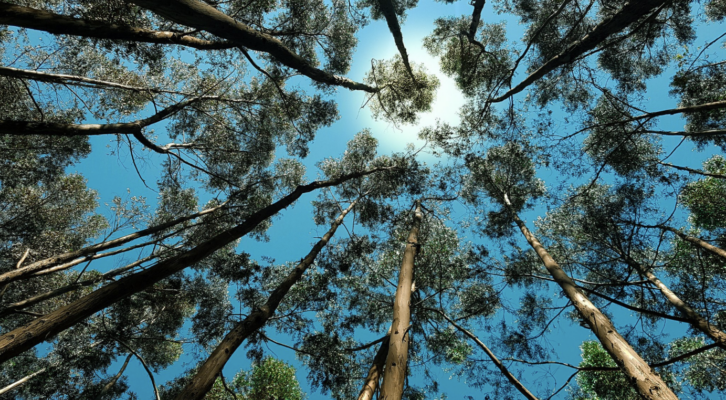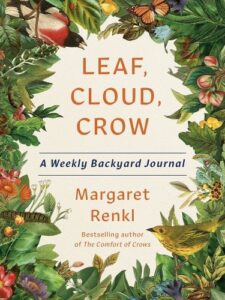
How to Pay Attention: On the Value of Stillness and Silence in All Seasons
Margaret Renkl Encourages Us to Explore the Wild, Wonderful World of Our Backyards
Silence and stillness are your greatest tools as a naturalist. Take care not to frighten anybody. Sit quietly and let the world come to you. Trying to get close to a wild animal will only distress it. A good pair of binoculars can help you avoid the temptation to engage in a futile chase.
The creatures who live in your ecosystem evolved to eat plants that are native to your region. To bring wild creatures closer, set a banquet for them by planting the foods they need. Keep in mind that a garden can be as large or as small as you have room for and energy to maintain. A few patio pots filled with native wildflowers will bring the bees and butterflies more surely than a whole garden filled with plants that our native insects don’t recognize as food. Do a bit of research: What native plants would wild creatures in your area be especially drawn to?
The more you learn about seasonal activity, the more you will know what to look for—or to listen for—at every time of year.
If you want to deepen your knowledge of nature, you can start by collecting a few good field guides and downloading a few good apps on your phone to help you identify what you observe. (You might start with books about the wildflowers, birds, and insects of your region.) Apps rely on the clarity of photos and can’t always provide a definitive ID, but they will get you in the ballpark. Then the books can help you find the name of the specific creature or plant you’re looking for.
Bird feeders can be a great resource for studying your avian neighbors at close range, but they must be kept scrupulously clean to prevent the spread of diseases. And it’s best not to feed other wildlife at all. Birds naturally seek out a variety of foods, but other animals may become reliant on their human feeders and lose the instinct for foraging. Special note: if you live in bear country, don’t put up a bird feeder!
For wild food to be safe for wildlife, it must be kept free of poisons. Make a commitment to keep your outdoor spaces as natural as your municipal codes will allow. No chemical fertilizer. No herbicides. No pesticides. Wildflowers commonly considered weeds are crucial food sources for insects, and insects are crucial food sources for birds, reptiles, amphibians, and even mammals. Welcome insects to your outdoor spaces, and you’ll be welcoming the whole wild world.
Another way to welcome your wild neighbors: Provide places for vulnerable creatures to nest, to shelter when it’s cold, and to hide when predators are on the prowl. Leave the leaves where they fall, if possible, or use them as natural mulch in your flower beds and foundation plantings if codes won’t allow you to leave them everywhere. Install nest boxes (with a snake baffle!) to help make up for the loss of natural nesting sites for cavity dwellers like bluebirds and chickadees and tufted titmice. Build a brush pile—ideally in a place that’s unobtrusive to your human neighbors but still visible from your own window—instead of hauling brush to the street to be carted to the landfill.
Consider what you already know about the seasons and begin to check deliberately for what you might expect to find at that time of year:
In winter: Look for signs of life that you can see now, while the trees are bare, but that are invisible during the green seasons. When you see last summer’s nests in the bare branches, you’ll know what to watch for during nesting season next spring. Are there any sleepy animals coming out to take the sun on unseasonably warm days? What are your wild neighbors eating now? Who is carrying off the fallen leaves to line their winter dens or nests?
The more you observe, the more you will fall in love with the wild world that you belong to, too.
In spring: Look for migrating geese, cranes, and hawks heading north. (And watch for them heading south again in fall.) Songbirds migrate mainly at night, but you might see them coming down in early morning to feed and rest, especially if there are insects and berries and a clean water source in your yard or in the parks nearby. Take note of any new birds passing through, any winter residents who have departed for northern latitudes, and any summer residents who are suddenly back in town after spending winter farther south. What wildflowers have started popping up? What early bees are feeding on the flowers?
In summer: If you don’t already have a bird bath, now is a great time to get one—or several—because in hot, dry weather, wild creatures have a harder time finding clean water than they have finding food. A water source on a pedestal for birds, plus another on the ground for other creatures, can bring many animals into view. What insects can you see now? What can you hear now? Late summer is high butterfly season; have you begun to see your own populations grow?
In fall: Which berries and nuts and drupes are ripening now? Which fall wildflowers have begun to bloom? Which foods do animals seem to prefer in this season of abundance? Which birds are passing through again? Which old friends have come back, and which are now on their way south?
The more you learn about seasonal activity, the more you will know what to look for—or to listen for—at every time of year. And the more you observe, the more you will fall in love with the wild world that you belong to, too—the world whose safety is in our hands.
__________________________________

From Leaf, Cloud, Crow: A Weekly Backyard Journal by Margaret Renkl. Copyright © 2024. Available from Spiegel & Grau.
Margaret Renkl
Margaret Renkl is the author of Late Migrations: A Natural History of Love and Loss and Graceland, At Last: Notes on Hope and Heartache From the American South. She is a contributing opinion writer for The New York Times, where her essays appear weekly. The founding editor of Chapter 16, a daily literary publication of Humanities Tennessee, and a graduate of Auburn University and the University of South Carolina, she lives in Nashville.



















